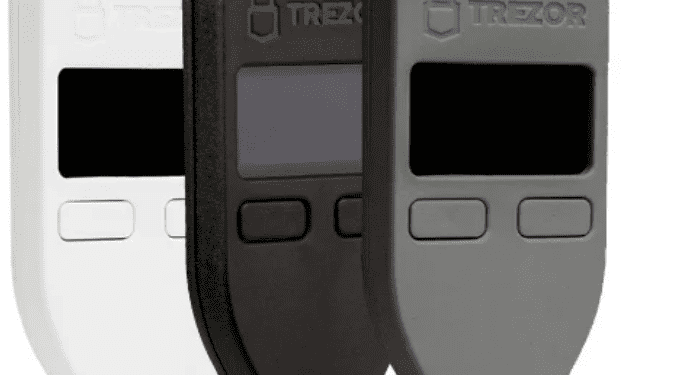Trezor and Ledger are two of the topmost crypto-hardware wallets. Hardware wallets are usually not affected by computer viruses and have pin encryption; therefore, added safety and need validity on the hardware device, unlike other wallets.
The Comparison: What Do Trezor and Ledger Wallets Have in Common?
Both Trezor and Ledger are well-known hardware wallets in the market. They both offer the top security for storing cryptocurrencies and are user-friendly.
Both Trezor and Ledger support many cryptocurrencies and permit exchanges. However, while Trezor’s Model T provides easy-to-use, Ledger Nano X provides Bluetooth.
Concerning the price, IOS compatibility, mobile application, and many crypto support, Ledger bests Trezor. Nonetheless, Trezor’s Model T would suffice for customers wanting a touchscreen and Shamir backup.
Trezor vs. Ledger:
1. Wallet
Trezor wallets have two versions; Trezor one and Trezor Model T. Similarly, Ledger wallet has two versions; Ledger Nano X and Ledger Nano S.
Trezor wallet protects users’ public and private keys from online and physical attacks and does not keep the coins in the device. Instead, the user has to use the keys to unlock the wallet for the coins to be moved to a new address.
On the other hand, Ledger wallet users need to plug it into their computers to get a PIN and a 24-word seed phrase to secure the wallet. Ledger users need to key in their passwords directly on the device since it uses BOLOS, a unique blockchain open ledger OS.
Trezor and Ledger wallets provide similar features, like connecting through a USB. Trezor wallets come in a particular shape kept in a plastic casing, while Ledger’s device comes with a sleek shape “akin to an ordinary steel universal serial bus storage device.”
2. Security
Trezor models use a single chip base and closed-source firmware. Trezo wallet models are not welcoming to third-party susceptibility tests. In addition, Trezor provides better private essential safety with Shamir’s backup.
Contrastingly, Ledger wallet models use a double chip base, a multi-purpose 32-bit microcontroller (STM32F042K), and a bank-grade secure element (SE).
3. Display
Trezor provides a good user experience with its display. As described by Guru 99, “Trezor One has a 128×64 pixel display, while the Trezor T has a 240×240 pixels liquid crystal display (LCD) which is also a touchscreen.”
“The Ledger Nano X has a 128×64 display, while the Ledger Nano S has a 128×32 display,” as described by Guru 99, which is not far from Trezor’s display.
4. Mobile Device Transactions and Interface
Mobile transactions are possible with the Trezor wallet because it has a Type C connector. The wallet uses its web-wallet interface for ERC20 token trading. Contrastingly, ledger wallets are not built for mobile transactions. They are made for wired exchanges.
Regarding the interface, Ledger wallets have buttons on the device for operation, and users need to install an application for the tokens they want. Meanwhile, Trezor users interact with crypto assets with a touchscreen.
The buttons on the Ledger Wallet might be challenging for some users to get used to, primarily if they are used to huge displays and touchscreens.
5. Currencies and Price
While Trezor wallets support more than 1000+ cryptocurrencies, Ledger wallets support above 5500+ cryptocurrencies.
Concerning their prices, The Trezor one wallets and the Ledger Nano S have an almost similar price of 59 EUR and 53 EUR, respectively. The Trezor Model T, which costs 189 EUR, is more expensive than the Ledger Nano X wallet, which costs 133 EUR.














